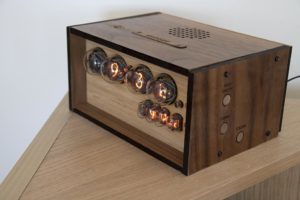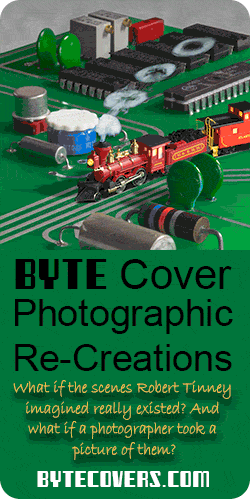 The Internet doesn’t need another description of a Nixie clock. So, as with my previous Nixie clock, I’ll just talk about what’s unique.
The Internet doesn’t need another description of a Nixie clock. So, as with my previous Nixie clock, I’ll just talk about what’s unique.
First, it includes an FM radio! I used the MikroE FM Click module and an amplifier module.

Second, it has a laser-cut enclosure, with laser-etched labels. This was a challenging enclosure to make, and it still leaves much to be desired. I’m not happy with the way the edges ended up. I might redesign it after I’ve lived with it for a while.
Also, it’s really hard to get everything lined up perfectly. Sure, the PCB has exact measurements and so does the laser-cut wood, but there’s just enough slop in the human assembly process to mess things up. All it takes is a fraction of a millimeter for a button cap to jam up against its opening, and not move freely.
So I glued the wooden caps onto the tactile switches, but I did it after assembling the enclosure. That way, the caps fit in the holes that were cut for them. But it means they’re not centered on the tactile switch – they’re a little offset (and, conversely, centering them on the tactile switch would not have aligned them with the holes in the enclosure).
It works for now. It remains to be seen if summer humidity will cause the wood to expand and prevent the buttons from being pressed.
Finally, whereas my previous clock multiplexed the Nixies (and I encountered problems because of it), this one does not. It uses three HV5530s to directly drive the 84 cathodes on the Nixies and neon bulbs. One unexpected benefit is that there’s no humming noise. My previous clock has a faint buzz, due to the relatively low frequency multiplexing. It would drive me crazy if it were by my bedside. This new clock radio is totally silent (to my ears, at least), even with its 500Hz PWM for controlling Nixie brightness.





